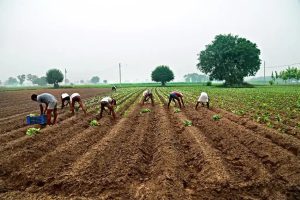Building a case for meso-level insurance: Perspectives from Private Insurers

Image by pixelfusion3d on iStock
As we move forward with building the case for meso-level insurance in agriculture, in this blog we will discuss the perspectives of one of the primary stakeholders in meso-level insurance — ‘the insurers’. In our previous blog we highlighted emerging insights from our ongoing interviews with key insurance sector experts. It covered the evolution of agricultural insurance in India, the adequacy of current products for effective risk mitigation, as well as their outlook on introducing a meso-level insurance product in India. A similar exercise with some of the key insurance providers [1] provided interesting insights into the existing agricultural insurance industry, the potential and viability of meso-level insurance in agriculture and on the product design and effective delivery channels. Some of these key highlights are discussed below.
Meso-level insurance can overcome many shortfalls in the existing agricultural insurance products in India as discussed in one of our previous blogs. The insurance providers unanimously agreed that insurance in agriculture is indeed a viable business opportunity for private insurance companies. Providing insurance to the agricultural sector has emerged as a priority sector for many insurance companies since the private insurance sector took active interest to participate in the Pradhan Mantri Fasal Bima Yojana (PMFBY) [2].
For example, as highlighted by the insurance head from Swiss Re, a product like ‘revenue insurance’, which guarantees a certain level of revenue rather than just focussing on production losses for crops not covered by Minimum Support Prices (MSP) could be the need of the hour and of interest to insurance companies too. However, it was also highlighted that insurance companies face certain technical challenges in developing sound solutions. This ensures that risk is distributed across parties in a fair manner. A meso-level insurance product with improved technological solutions for loss assessment, claim settlement etc. can help to bridge this protection gap. Farmer Producer Organisations (FPOs), microfinance institutions, agri-businesses, non-governmental organisations are some of the risk aggregators identified by the insurance providers who could be potential stakeholders and implementers of a meso-level insurance product.
The insurance providers also highlighted key aspects of product design and delivery that need to be kept in mind while developing meso-level insurance products.
- Ensuring profitability: Firstly, private insurers stressed that meso-level insurance products should be profitable to all the stakeholders engaged in it. From the private insurers’ perspective, a meso-level insurance product with a 5% to 10% profit margin is a good starting point to venture into the market. This can be ensured through reduced administrative costs that can be potentially achieved for insurance offered at the meso-level.
- Affordability: Proper pricing of the product is another critical aspect. Since the product aims to benefit marginal farmers and large farmers equally, it should be affordable for the institutions such as FPOs, credit institutions, co-operatives, agri-businesses etc. engaged with these farmers. This will help the institution to raise sufficient funds for premium payments based on the services offered by it. The government can play an important role in promoting meso-level insurance by providing necessary support in the form of premium subsidy to the participating institutions.
- Removing Complexities: The third key point is that the loss assessment and claim settlement process needs to be streamlined for smooth take-up of the product. One can overcome the hurdles by the aid of improved technology to complement the product design [3]. Use of technological solutions such as satellites, remote-sensing data, drones, and artificial intelligence can offer the advantage of scale that makes the per-unit cost far more economical for the insurance providers as well as for the insured.
Insights from both the Agri-insurance experts and insurance providers suggest that since the market for meso-level insurance products is yet to be piloted in India — developing suitable products, which meet the requirements of clients and are profitable, will require testing and iteration. This has also been the case with the existing agricultural insurance products in India that have been modified and improved over time. Hence, an important first step is to test the product across different customer segments, collect feedback from all stakeholders, and ensure that these feed into product design and delivery through rapid iterations.
This research was developed as part of the Bharat Inclusion Research Fellowship.
